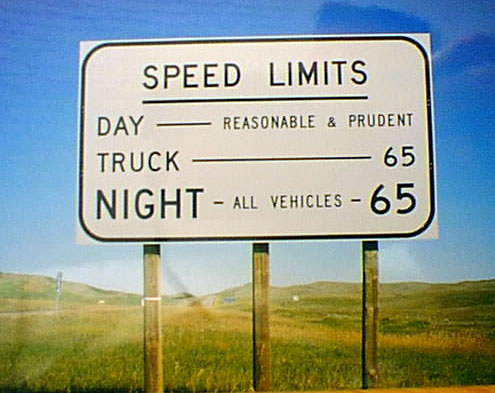A publication by the Auto Safety Alliance

| Driver
Alert
A publication by the Auto Safety Alliance |
 |
| Volume 1 | November 1997 | Issue 1 |


|
Does the elimination of the federally
mandated 55-mph speed limit make sense? Should the states have the authority
to set their own speed limits? Do people drive the posted speed limits?
Have crashes increased now that some states have increased their limits?
In 1973, the federal government mandated the 55-mph speed limit at the behest of President Nixon, who proposed it as a way to conserve fuel during the Arab oil embargo. States, which had always set the speed limits on their highways, suddenly found they had lost their authority. In November, 1995, President Clinton signed a $6-billion transportation bill that ended the Federal 55-mph speed limit, and gave that authority back to the states, allowing them to set their own speed limits. Safety groups say speed kills. The Transportation Department estimates that 6,400 additional people will die each year due to the repeal of the federal speed limit. Studies show that a third of fatal crashes are “speed related.” Higher speed limit opponents cite studies that show that lowering the national limit to 55 mph in 1973 saved lives. These studies also showed that raising the limit to 65 mph increased fatalities. Higher speed limits also mean increased fuel use and more pollution. Others say states should be free to decide for themselves whether the danger of more auto crashes outweighs the advantage of faster travel. Before the federally mandated speed limit, states set the limits anywhere from 65-mph to 80-mph, and Montana and Wyoming had no limit at all. Jeff Fisher, a businessperson who routinely drives across the Midwest, says 55-mph speed limits in wide-open spaces are unnecessary and even dangerous. “I feel more nervous passing drivers going 55 mph than passing those going 65 mph,” he says. Some motorists say that everyone ignores the 55-mph speed limit because it is ridiculously low. They claim everyone drives 10 to 15 mph above the posted limit, so higher limits would bring the law into closer conformity with the prevailing practice. A 1992 U.S. Department of Transportation study shows that most motorists drive at speeds they consider reasonable for conditions. In an informal poll taken from randomly selected motorists, all admitted to driving with the speed of the traffic, not the posted speed limit. Steve Walker, an Australian who recently became acquainted with America’s congested highways, says that following the general flow of the traffic is the safest and best way to travel. “You can more easily gauge the passing time and safety aspects of passing and lane changing,” he stated. People have many different opinions about the speed limit’s safety implications. Speeders who receive speeding tickets for breaking the 55-mph limit dislike it intensely. However, people who adhere to the 55-mph limit cite safety studies which support their views.
|